This issue of Investment Perspectives looks specifically at the aging demographic, and the likely impact it will have on seniors housing in various parts of the world.
Don’t mention the war
Figure 1 shows population growth in the 75-84 age group for USA, UK and Germany. While the booming grey population is well understood, the chart highlights that this cohort will actually start to decline from 2021 in Germany.
This is because we are still living with the effects of the Second World War. While the Anglosphere was coming out of the Great Depression in the 1930s, Germany under Nazi rule was experiencing a population boom with a spike in people born up to 1941. As the war went on, birth rates rapidly declined before reaching a low in 1946 – and 75 years after 1946 is 2021.
Birth rates only started rising as West Germany rebuilt. While Germany passed its ‘silver tsunami’ moment two years ago, in 2022 the first of the baby boomers will be turning 75 in the US and UK (Figure 2).
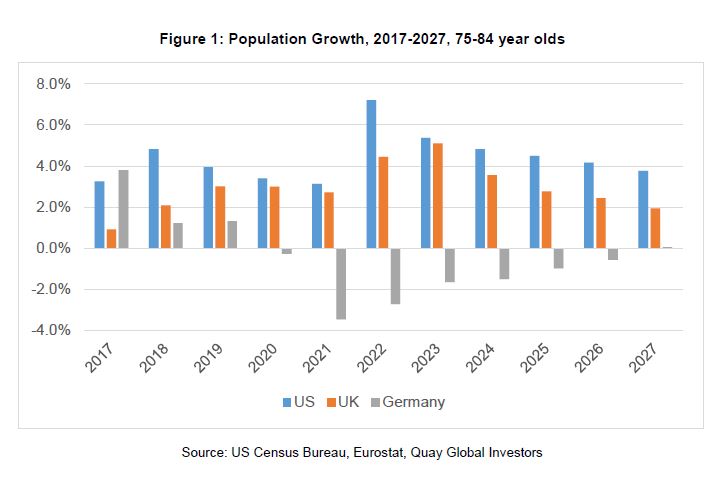
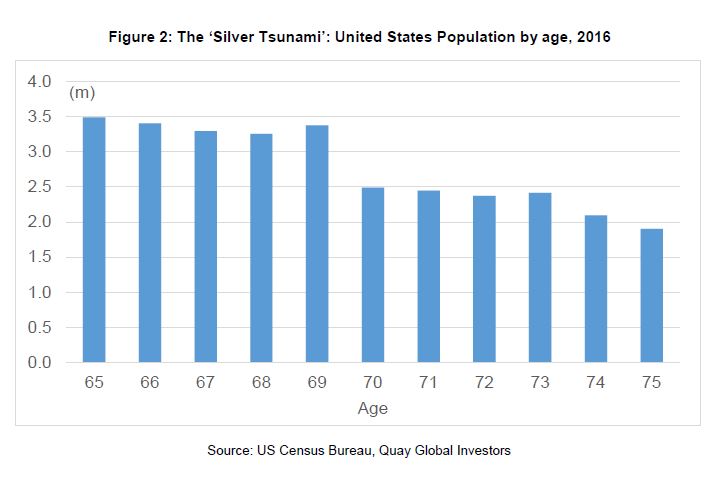
Banking on the boomers
The emergence of this ‘silver tsunami’ makes seniors housing in the US and UK look very interesting.
We know from our discussions with seniors housing management teams that it is the 75+ age group that looks to seniors housing, as their health and mobility begins to recede. This often begins as ‘independent living’ seniors housing before progressing to more acute forms such as assisted living and memory care. But will the supply match the demand (Figures 3 and 4)?
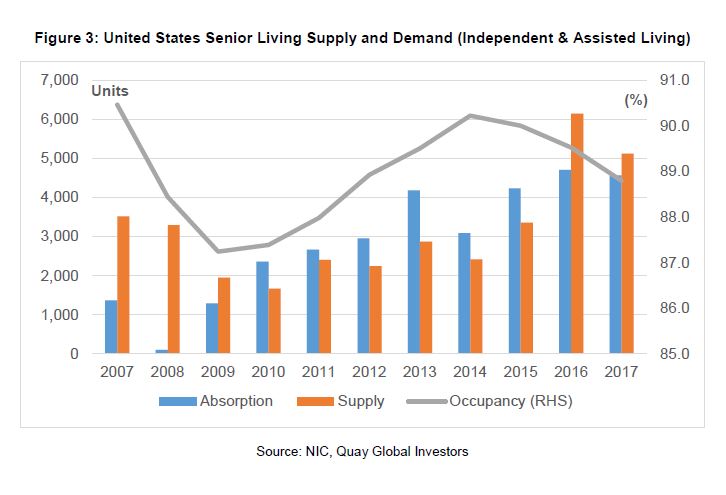
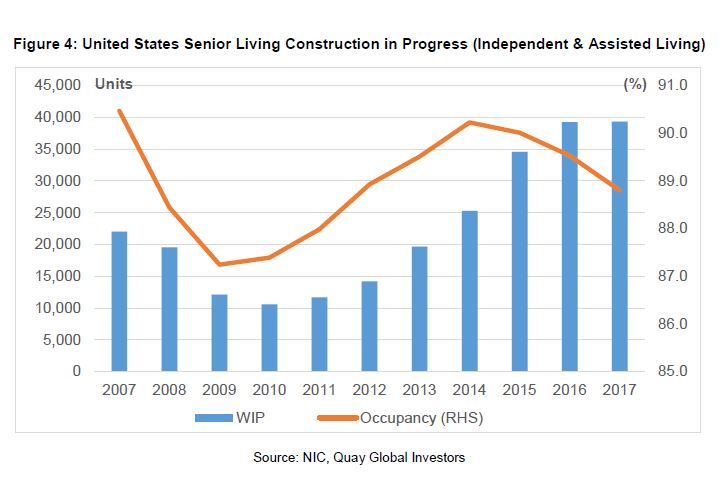
The seniors housing market has been impacted by supply over the past two years, but the number of building starts has decreased since then. This means that supply will decrease in the next two years to 2019 (Figure 5).
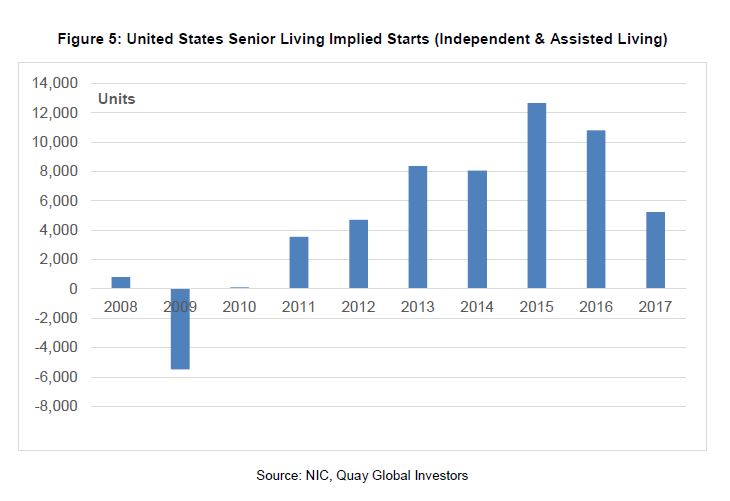
With a large uptick in the 75-84 year old population from 2022, building permits would need to accelerate this year for those projects to be completed by 2020 and leased up by 2021 (based on our discussions with management of one of our investees).
The data currently shows a slowing down of construction starts, and if supply doesn’t appear to increase by 2022, seniors housing could be a very interesting investment proposition. For long-term investors, now is the time to start thinking about this dynamic.
Conclusion
As we look at our investment universe, we see robust population growth in Australia; two significant generations impacting US real estate; and an ageing natural population in Europe shaped by war and immigration.
While we discussed population growth and the echo boomers in our last Investment Perspectives, the United States will experience a spike in 75-84 year olds in 2022 and we watch the seniors housing sector closely to see how it can accommodate this. An increase in demand without the supply to match it could result in increased returns.
It is easy to get absorbed in these charts and begin to believe that a changing trend translates into investment returns. However, while we look at demographics closely, it is not the sole determinant of investment returns. Our research process aims to identify companies that offer the most compelling risk-adjusted returns, and common contributors include the real estate supply outlook in the specific markets in which our investees operate; macroeconomic and social factors affecting demand; management quality; asset quality; and various other factors.
But the slow-moving beast moves inexorably towards economic change and can’t be ignored. For long-term real estate investors, demographics do matter.
Download a copy of the article here.
